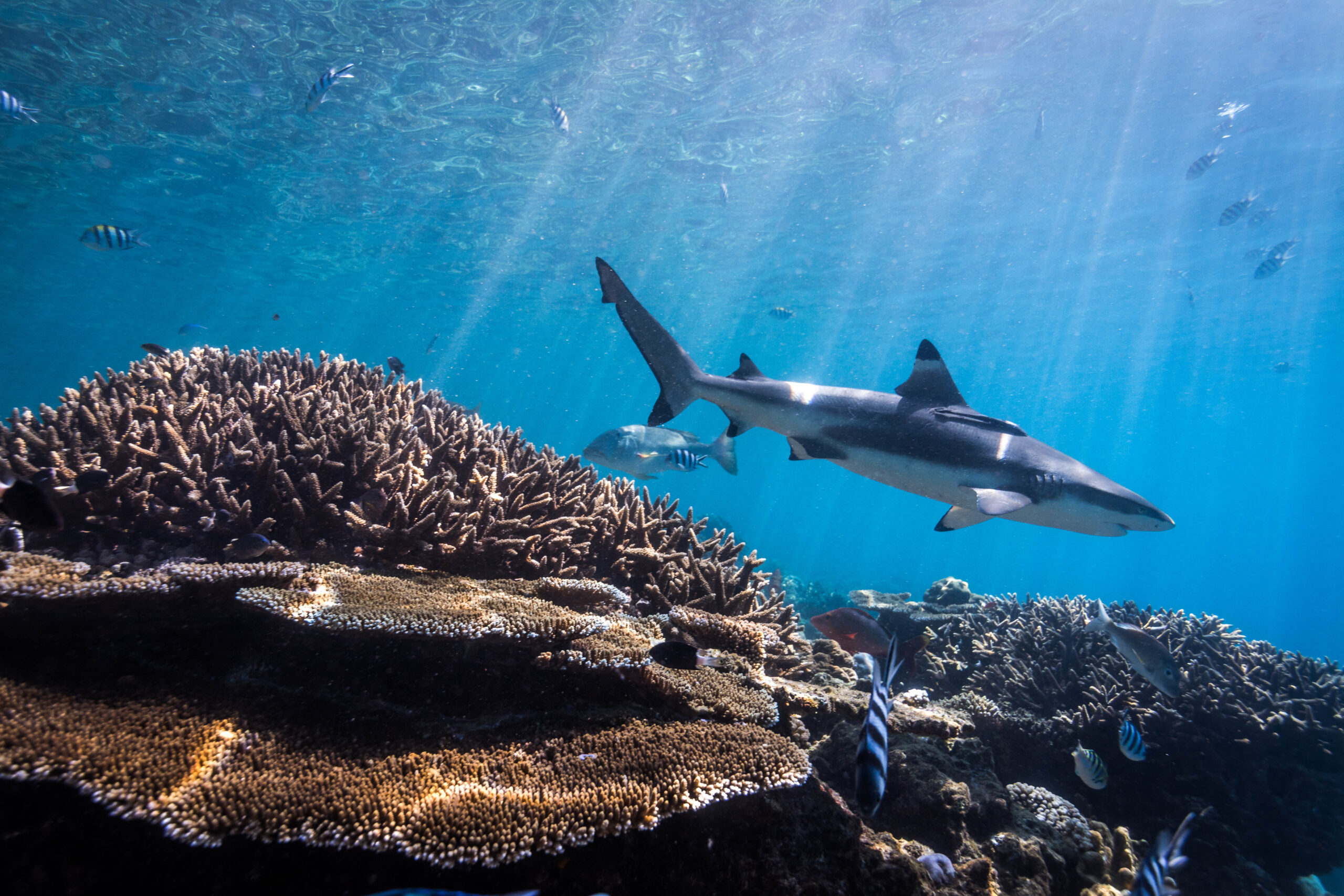Although coral restoration is a popular method of management and conservation of coral reef ecosystems, its ecological basis is under-developed. For example, in addition to well-known restoration methods such as outplanting nursery-raised corals, managers and practitioners may also be able to utilize the fundamental processes of community ecology to repair degraded marine ecosystems. This paper provides a comprehensive analyses of the potential role of trophic ecology in reef restoration and discusses ways of using trophic interactions to benefit coral restoration. Three processes that play an important role in coral restoration are: 1) consumptive effects of reef animals on corals, 2) coral heterotrophy, and 3) consumer-derived nutrient cycling. Based on analyses of 519 studies on coral restoration, the authors of this study determined that only 15% of studies consider trophic interactions despite the fundamental role of trophic ecology on coral reefs. The most widely studied process is herbivory, while the other processes (corallivory, coral heterotrophy, consumer-derived nutrient cycling) receive much less attention. Herbivores are natural allies for restoration practitioners, as they consume macroalgae and decrease competition for corals. In contrast, corallivores (or coral predators) drive coral mortality by causing coral tissue loss and transferring diseases. Algal-farming damselfish can both undermine the efforts of restoration practitioners by creating algal “gardens” as well as provide beneficial nutrients to their coral hosts. For coral heterotrophy, some corals consume zooplankton, phytoplankton, dissolved organic matter, and other consumer-derived nutrients, that critically depend on healthy fish populations. Thus, trophic ecology is essential for the understanding of productivity, community structure, and resilience of tropical coral reefs, and consideration of trophic interactions should become an integral part of coral restoration projects.
Authors: Ladd, M.C. and A.A. Shantz
Year: 2020
View article
Food Webs 24. doi: 10.1016/j.fooweb.2020.e00149


